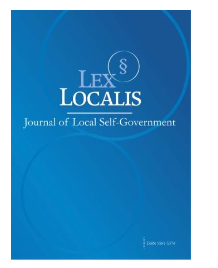THE ASYMMETRIC EFFECTS OF FISCAL DOMINANCE AND MONETARY POLICY CONSTRAINTS ON INFLATION DYNAMICS IN SAUDI ARABIA: AN NARDL ANALYSIS
DOI:
https://doi.org/10.52152/nq55n067Keywords:
NARDL Model, Asymmetric Effects, Fiscal Dominance, Monetary Policy Constraints, Inflation Dynamics, Policy Coordination, Saudi Arabia.Abstract
The dynamic interaction between fiscal and monetary policies plays a crucial role, especially in economies characterized by Fiscal Dominance and Monetary Policy Constraints, such as Saudi Arabia’s fixed exchange rate regime. Fiscal policy, encompassing public revenues and spending, alongside monetary policy, which manages the money supply, are the primary macroeconomic tools aimed at achieving price stability. Given the limitations of linear models in capturing complex economic behaviors, this study investigates the asymmetric effects of these policy instruments on inflation dynamics under structural constraints.
Utilizing the Nonlinear Autoregressive Distributed Lag (NARDL) model on data ranging from 1980 to 2021 obtained from the Saudi Central Bank (SAMA), the salient findings are as follows:
- Confirmation of Asymmetry: The model reveals significant asymmetric effects of policy shocks on inflation, where the impact of policy increases differs markedly from decreases, confirming the need for a nonlinear framework.
- Fiscal Dominance and Nonlinearity: Although the currency peg attenuates the statistical significance of some long-run individual policy shocks—consistent with the monetary constraint—the short-run impacts are strong and highly nonlinear. Fiscal policy variables show mixed, time-dependent asymmetric influences.
- Severe Monetary Policy Constraints: Monetary policy exhibits complex short-run asymmetry. Notably, a liquidity reduction (negative money supply shock) leads to an unexpected sharp rise in inflation, highlighting the significant limitations and potentially destabilizing effects of monetary policy actions under the fixed exchange rate system.
- Equilibrium and Stability: A significant Error Correction Term (ECM) confirms a stable long-run equilibrium at the 1% level, with a moderate adjustment speed back to equilibrium estimated at approximately two years.
This study emphasizes the critical importance of employing nonlinear models and considering the timing and direction of policy shocks to better understand and manage inflation within structurally constrained, fiscally dominant economies like Saudi Arabia.
Downloads
Published
Issue
Section
License
Copyright (c) 2025 Lex localis - Journal of Local Self-Government

This work is licensed under a Creative Commons Attribution-NonCommercial-NoDerivatives 4.0 International License.








